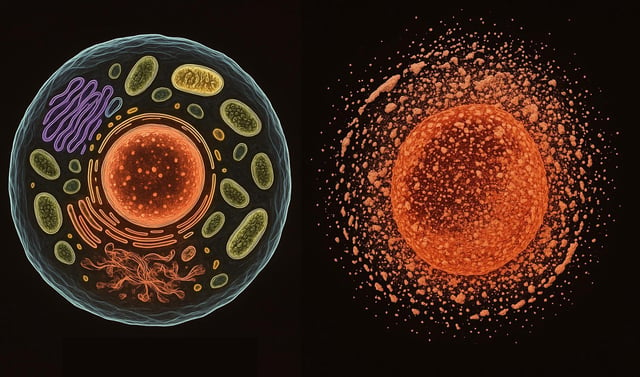Overview
- The study establishes necrosis as a proactive mechanism driving systemic biological decline rather than a passive endpoint.
- Research reveals that calcium overload during necrosis causes cell rupture, the release of toxic molecules, and widespread inflammation.
- Necrotic cascades underpin conditions such as kidney failure, heart disease, and Alzheimer’s, highlighting necrosis as a unifying target for diverse therapies.
- By proposing interventions to halt necrosis, the authors suggest new avenues for treating age-related diseases on Earth and protecting astronauts from accelerated organ aging in space.
- Published this month in Oncogene, the study represents a collaboration between UCL, LinkGevity, the European Space Agency, and other leading research institutions.
